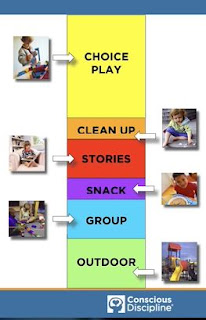Allie Clements is an intervention specialist at
Walter Shade Elementary in West Carrollton. We have been impressed with Allie
for a long time. We have coached Allie and her team with some very challenging
students and Allie has always been positive and proactive in her approach. She
knows how to effectively interact with students demonstrating oppositional
behavior by giving shared control using forced-choice options. She makes an
effort to understand the underlying challenges for all of her students and tries
to individualize her support strategies. Today’s ALIST Spotlight shines bright
on Allie and these wonderful supports in her classroom.
Here are some examples of the strategies and tools
Allie is using in her classroom:
When Allie had a student in her class using an AAC
device, she hung this poster at the front of the class to model use of the AAC
core page. We know how important it is to model use of AAC as much as possible.
This tool also came in handy on days when the student came to school without
her device.
In February, Allie got a new student from another
school. He spends a majority of time in his general education class with an
attendant and Allie is responsible for the behavioral supports. Allie created this
Roblox behavior plan as well as the Zones check-in sheet that he fills out
throughout his day.
At his previous school, he was using the same
break card when he was frustrated or tired (he is heavily medicated),
and Allie felt like he really needed to learn the difference between needing a
break due to frustration levels versus being tired so she created these! The
front of the cards show the feeling (he is biracial and she felt representation
is important, so she used images from Google of a biracial male), and
when he flips it over, it has visuals for his options such as spending time
with Sammy the therapy dog or going for a walk. These are always laid out
on his desk for him.
For the younger students this year who spend a
majority of their day in her room, Allie uses basic class wide supports to increase
positive behavior- token boards that incorporate their interests and picture
schedules.
We
love Allie’s creativity when making visual contracts to motivate student
engagement. She does a great job incorporating special interests to get student buy-in including individualized
visual contracts with special interest themes and visual work contracts presented as special interest puzzles.


The
school closures last March and continuation of remote learning this school year
has been a challenge for many of our teachers. Allie embraced this challenge and
was able to continue meeting the unique needs of her students not only in
person but those who were remote as well.
As
an ALISTER, we see Allie as an extension of our team. She has presented during
a couple of our trainings. We love it when the information can come from a
professional who is currently implementing the evidence-based practices every
day.
Thank
you Allie! We appreciate all that you do!













































































